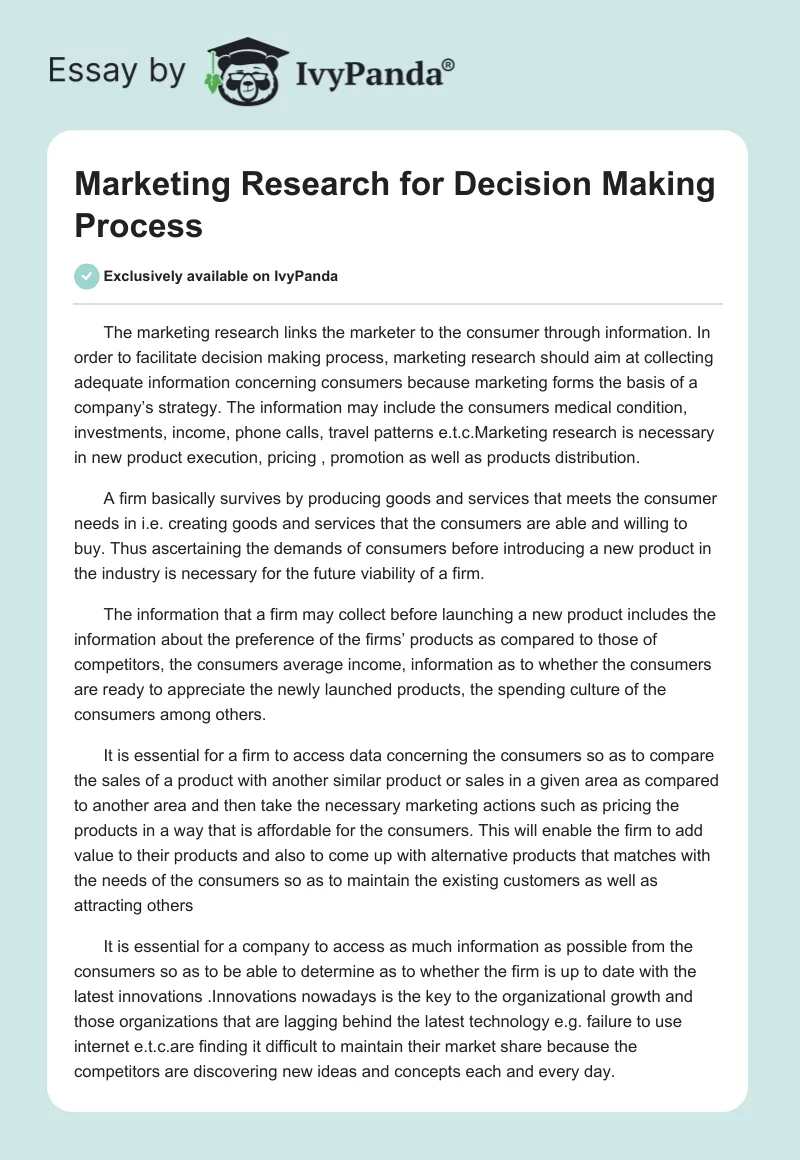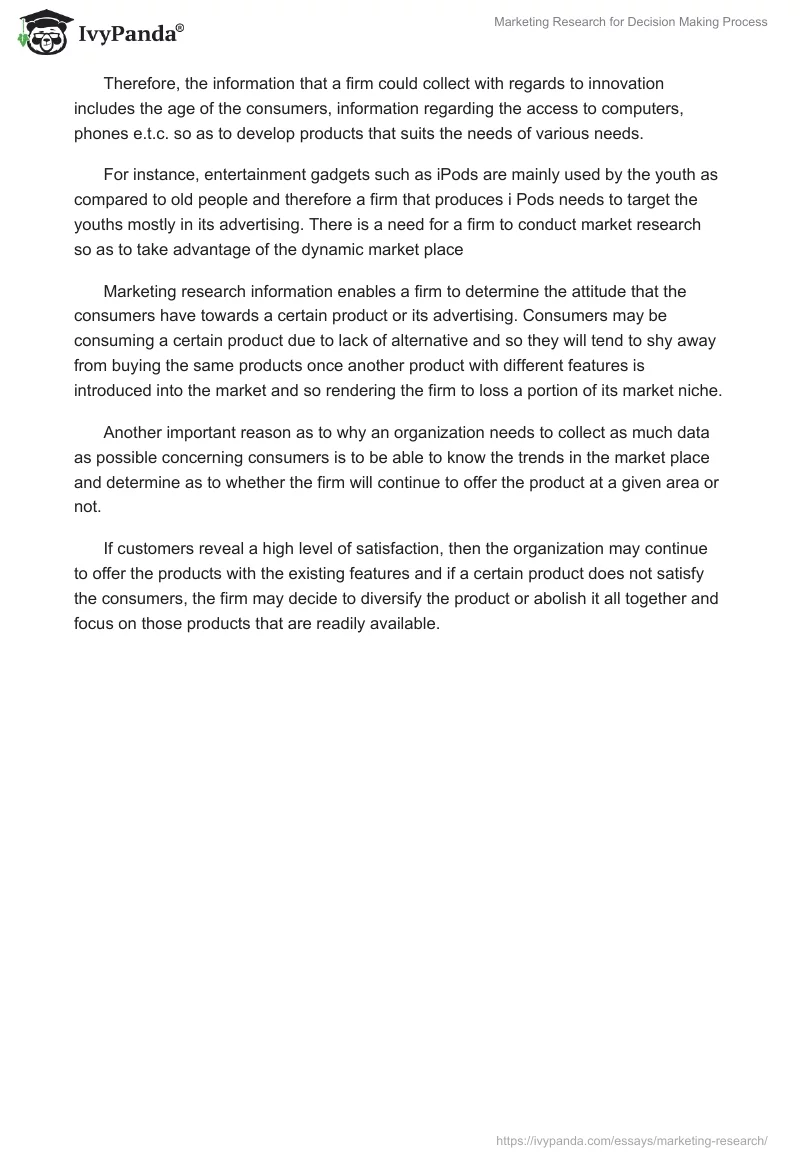The marketing research links the marketer to the consumer through information. In order to facilitate decision making process, marketing research should aim at collecting adequate information concerning consumers because marketing forms the basis of a company’s strategy. The information may include the consumers medical condition, investments, income, phone calls, travel patterns e.t.c.Marketing research is necessary in new product execution, pricing , promotion as well as products distribution.
A firm basically survives by producing goods and services that meets the consumer needs in i.e. creating goods and services that the consumers are able and willing to buy. Thus ascertaining the demands of consumers before introducing a new product in the industry is necessary for the future viability of a firm.
The information that a firm may collect before launching a new product includes the information about the preference of the firms’ products as compared to those of competitors, the consumers average income, information as to whether the consumers are ready to appreciate the newly launched products, the spending culture of the consumers among others.
It is essential for a firm to access data concerning the consumers so as to compare the sales of a product with another similar product or sales in a given area as compared to another area and then take the necessary marketing actions such as pricing the products in a way that is affordable for the consumers. This will enable the firm to add value to their products and also to come up with alternative products that matches with the needs of the consumers so as to maintain the existing customers as well as attracting others
It is essential for a company to access as much information as possible from the consumers so as to be able to determine as to whether the firm is up to date with the latest innovations .Innovations nowadays is the key to the organizational growth and those organizations that are lagging behind the latest technology e.g. failure to use internet e.t.c.are finding it difficult to maintain their market share because the competitors are discovering new ideas and concepts each and every day.
Therefore, the information that a firm could collect with regards to innovation includes the age of the consumers, information regarding the access to computers, phones e.t.c. so as to develop products that suits the needs of various needs.
For instance, entertainment gadgets such as iPods are mainly used by the youth as compared to old people and therefore a firm that produces i Pods needs to target the youths mostly in its advertising. There is a need for a firm to conduct market research so as to take advantage of the dynamic market place
Marketing research information enables a firm to determine the attitude that the consumers have towards a certain product or its advertising. Consumers may be consuming a certain product due to lack of alternative and so they will tend to shy away from buying the same products once another product with different features is introduced into the market and so rendering the firm to loss a portion of its market niche.
Another important reason as to why an organization needs to collect as much data as possible concerning consumers is to be able to know the trends in the market place and determine as to whether the firm will continue to offer the product at a given area or not.
If customers reveal a high level of satisfaction, then the organization may continue to offer the products with the existing features and if a certain product does not satisfy the consumers, the firm may decide to diversify the product or abolish it all together and focus on those products that are readily available.


